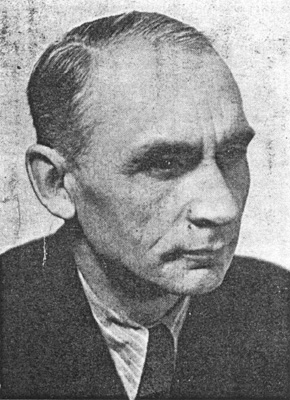- Jan Weiss
Infobox Writer
name = Jan Weiss

quote =
birthdate = birth date|1892|5|10|df=y
birthplace =Jilemnice
deathdate = death date and age|1972|3|7|1892|5|10|df=y
deathplace =
occupation =short story writer,novel ist
genre =Fantasy ,Science Fiction
movement =
notableworks =Dům o Tisíci Patrech
influences =Franz Kafka
influenced = Czech Science FictionJan Weiss (10 May 1892 – 7 March 1972) was a major Czech
writer , most famous for his surreal bookDům o Tisíci Patrech .Birth and early life
Weiss was born on 10 May 1892, in Valdštejnská ulice číslo 68 (Valdštejn street number 68) in the town of
Jilemnice as the son of Josef Weiss (called by the local people "Monarch") and Filoména Richter.His mother died when he was aged five years in 1897. His father married again, to a German woman and had another three children.
He and his cousin were known local troublemakers and they are said to have "entered local tradition".
In 1913 he finished the Gymnasium in
Hradec Králové and since 1913 studied law inVienna , but in 1914 he was forced to go and fight inWorld War I , after studiing two semestres. Here, in 1916 by he was captured atTarnopol and spent his time in two prisoner camps in theSiberia , where he contractedTyphoid fever . (Note: there exists a rumor that he was captured on the Italian front, but this is not true). In 1917 he was transferred to the camp in Berezkova, where they amputated his frozen thumbs. Here he joined the Czech Legions.It is known that the dealings of detainees who caught this disease were the main inspiration for his earlier works, most notably
Barák Smrti .After 1919 he joined the Czechoslovakian legions. He returned toCzechoslovakia in February 1920 (actually visiting this country for the first time, as he was born inAustria-Hungary , in the Bohemian Kingdom). After his return home he worked at the ministerium for public work ("veřejné práce"). At this time he was lodged in Borome, thanks to his uncle, a priest in Choteč.Beginnings of writing
His first prose were created in 1918 in Žitomír. These works reflect the despair of war.
While in Russia he wrote the drama
Penza (finished inIrkutsk ).His first stories were published in magazines. In 1924 his story "Sen" ("A Dream") was published in "Cesta" magazine and then was followed in the same year in "Národní Osvobození" (national liberation), the extra to "Samostatnost" (Independence) by the short story "Ruce" (Hands).
Later life (before München, up to 1927)
In 1925 Weiss met with
Jaroslav Havlíček , with whom he shared rather fine contacts until the laters death in 1943. In the years 1926-1927 "Penza" was published in "Legionářské besedy", thanks to the assistance of Josef Masařík, the editor-in-chief. This work got his the Award of the Czech Academy.In the same time he became a member of the Artistic Forum (where he met with Karel Sezima,a later reviewer of his work) and the Circle of Czech writers (his membership subsribed by Rudolf Medek) and into the Radio žunrálu (Radio Journal), thanks to Ladislav Plechatý.In
Prague he visited many cafés, includingSlávie , or Unionka. Here he regularly met with Josef Masařík, Rudolf Medek, or J.O.Novotný (an editor of "Legionářské besedy" and the literary magazine "Cesta").In 1926 he met his later wife Jaroslava Rašková. There was an age difference between them (Raškobá was born 1905), but they later married anyway, in 1928 in the "Staroměstská Radnice" (Ladislav Plechatý and Josef Masařík were witnesses).
Threefold debute
In 1927 he made his "triple" debute, with his first three books:
*
Barák Smrti *
Fantóm Smíchu *
Zrcadlo, které se opožďuje .All of these are first versions, some other followed of each, compromising of partly different stories, but holding the main story, after with each book is named.
Married life (until München)
Weiss and Jaroslava went to
Paris on theirhoneymoon . In 1928 there is a need for apartments and Weiss receives the keys to the apartment on "Podlipná ulice" (podlipná street) from fabrikant Grmela.On the 29th of June 1929, Weiss's daughter Jana was born.
In this year his most famous book,
Dům o Tisíci Patrech , was first published in its first form (later forms bear modifications in grammar).Also the Weiss family fly to
Jugoslavia for half the price, the other half is paid with a "propagation fejeton".
Wikimedia Foundation. 2010.
